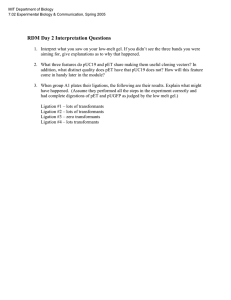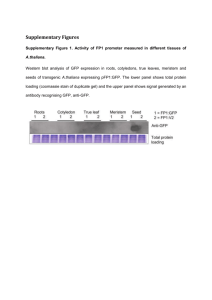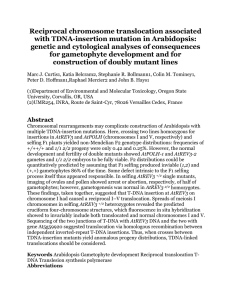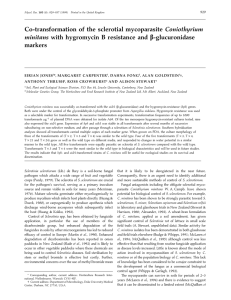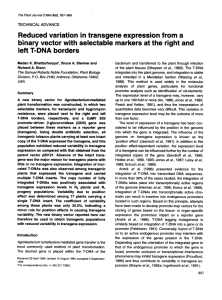Abstract: Transformants of Arabidopsis thaliana can be
advertisement
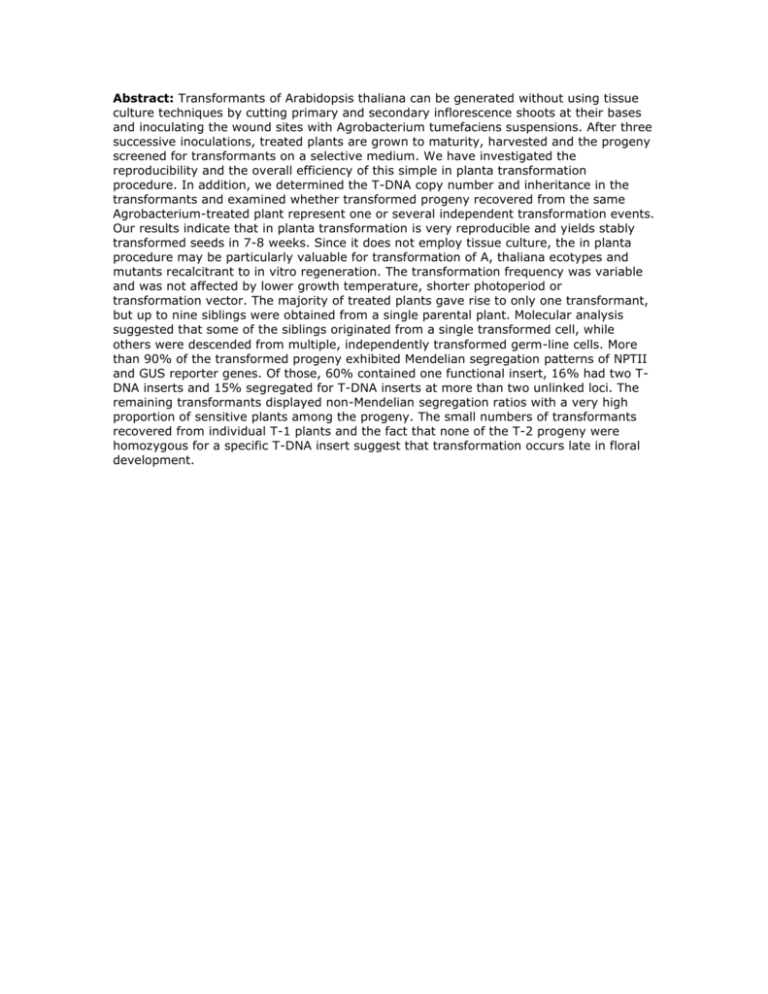
Abstract: Transformants of Arabidopsis thaliana can be generated without using tissue culture techniques by cutting primary and secondary inflorescence shoots at their bases and inoculating the wound sites with Agrobacterium tumefaciens suspensions. After three successive inoculations, treated plants are grown to maturity, harvested and the progeny screened for transformants on a selective medium. We have investigated the reproducibility and the overall efficiency of this simple in planta transformation procedure. In addition, we determined the T-DNA copy number and inheritance in the transformants and examined whether transformed progeny recovered from the same Agrobacterium-treated plant represent one or several independent transformation events. Our results indicate that in planta transformation is very reproducible and yields stably transformed seeds in 7-8 weeks. Since it does not employ tissue culture, the in planta procedure may be particularly valuable for transformation of A, thaliana ecotypes and mutants recalcitrant to in vitro regeneration. The transformation frequency was variable and was not affected by lower growth temperature, shorter photoperiod or transformation vector. The majority of treated plants gave rise to only one transformant, but up to nine siblings were obtained from a single parental plant. Molecular analysis suggested that some of the siblings originated from a single transformed cell, while others were descended from multiple, independently transformed germ-line cells. More than 90% of the transformed progeny exhibited Mendelian segregation patterns of NPTII and GUS reporter genes. Of those, 60% contained one functional insert, 16% had two TDNA inserts and 15% segregated for T-DNA inserts at more than two unlinked loci. The remaining transformants displayed non-Mendelian segregation ratios with a very high proportion of sensitive plants among the progeny. The small numbers of transformants recovered from individual T-1 plants and the fact that none of the T-2 progeny were homozygous for a specific T-DNA insert suggest that transformation occurs late in floral development.

